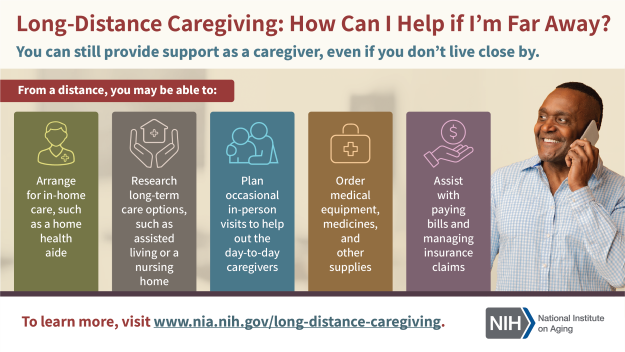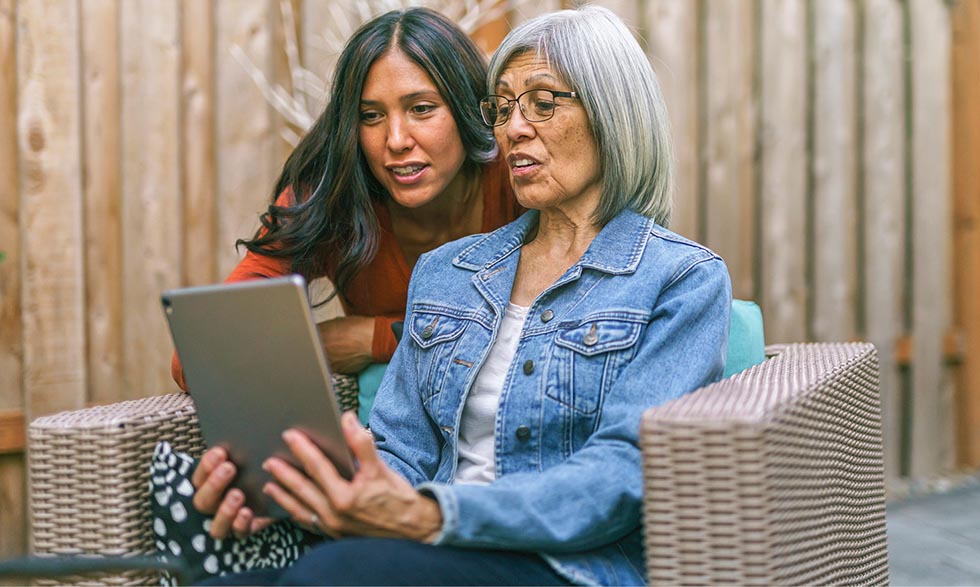Millions of people act as long-distance caregivers, supporting loved ones who are aging or coping with an illness or disability. This role can include managing a loved one’s finances, organizing their medical appointments and care, coordinating with their other caregivers, and offering emotional support.
Whether you are already a caregiver or may become one in the future, these tips can help you navigate long-distance caregiving effectively.

Understanding their health and care
Learn about your loved one’s health, treatments, and living situation. Research their health condition and available resources, including Medicare and Medicaid benefits, and have open conversations with them about their situation and what support they need.
Ask your loved one for written permission to speak with their medical team. This allows you to stay informed about their health and care, even from a distance. Doctors and other health care providers need this consent to share medical information with you.
Keeping track of important documents
Collect and organize important legal, financial, and medical documents. Make sure they are up to date and located somewhere secure and easy to find. Create lists of medications they take and when they take them. Gather contact information for their doctors, health care providers, and other important contacts, and update this information regularly.
Planning meaningful visits
Schedule in-person visits with your loved one when you can. Before you arrive, ask what your loved one would like to do during your visit, whether it’s grocery shopping, visiting friends, or household tasks. If possible, schedule doctor’s appointments during your visit (with permission) and meet with your loved one’s other caregivers if they live close by.
Don’t forget to carve out quality time together not related to caregiving. Whether it's a shared hobby or simply relaxing and catching up, enjoyable activities make visits less stressful. This ensures your time together is about more than just tasks and responsibilities.
Creating a local care network
You can't do it all alone, especially from far away. Identify local family members, friends, neighbors, and others who can lend a hand or help in emergencies. Let them know what’s going on and how to contact you.
Build relationships with your loved one's health care providers and other caregivers. Consider hiring local caregivers or care managers to help coordinate care.
Helping the primary caregiver
Even if you’re not the primary caregiver, you can still support that person by staying in regular contact, asking what you can do to help, and offering to take on tasks or responsibilities. Before you visit, check in with that person about what support they might need and how you can help. If possible, plan your visits so the primary caregiver can take a break, and arrange for respite care if necessary.
Staying connected and informed
Regular communication is key. Schedule regular check-ins with your loved one and with their other caregivers to stay up to date on their condition.
Technologies such as video calls, group chats, and shared calendars can be useful tools for staying connected. Join your loved one’s telehealth visits (with their permission) and set up calls with other providers and caregivers to discuss their health and well-being.
Adapting as their needs evolve
Be prepared to adjust if your loved one's situation or needs change. Have a conversation about different options (such as assisted living or in-home care services) and consult with their health care providers about which ones might be useful and when.
This short video from the National Institute on Aging has essential tips to help long-distance caregivers stay informed and effective.







